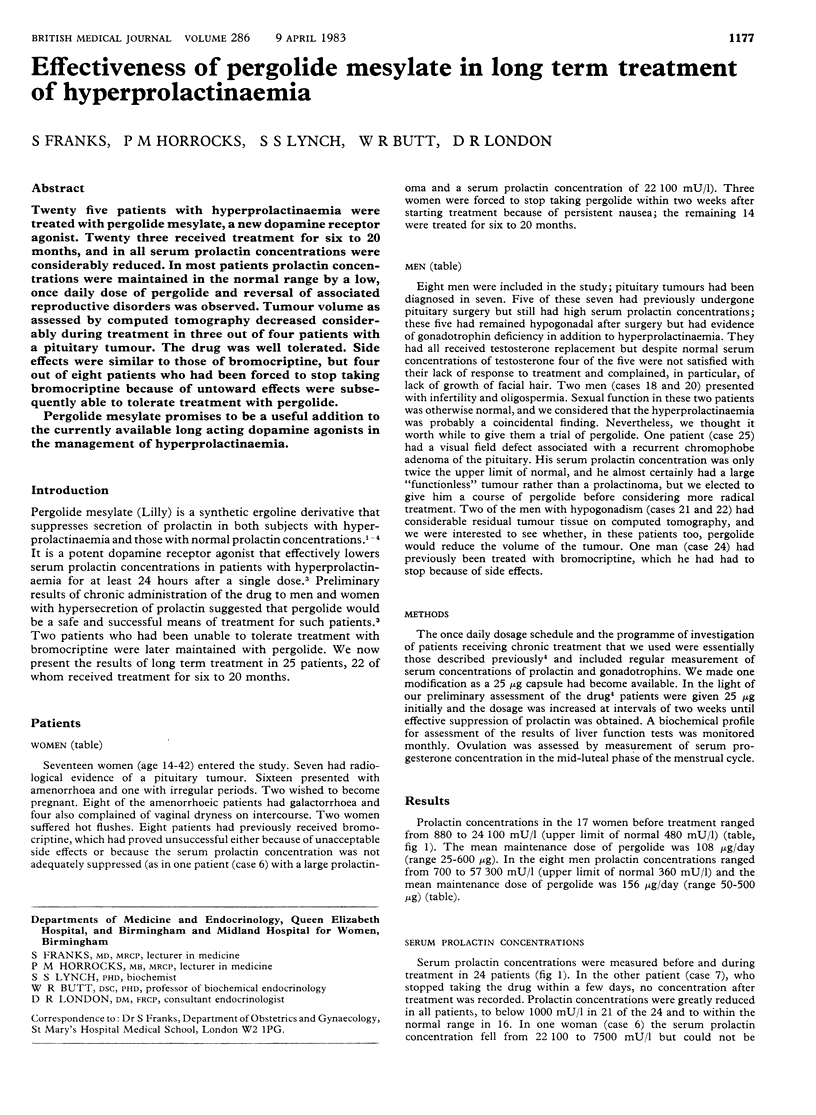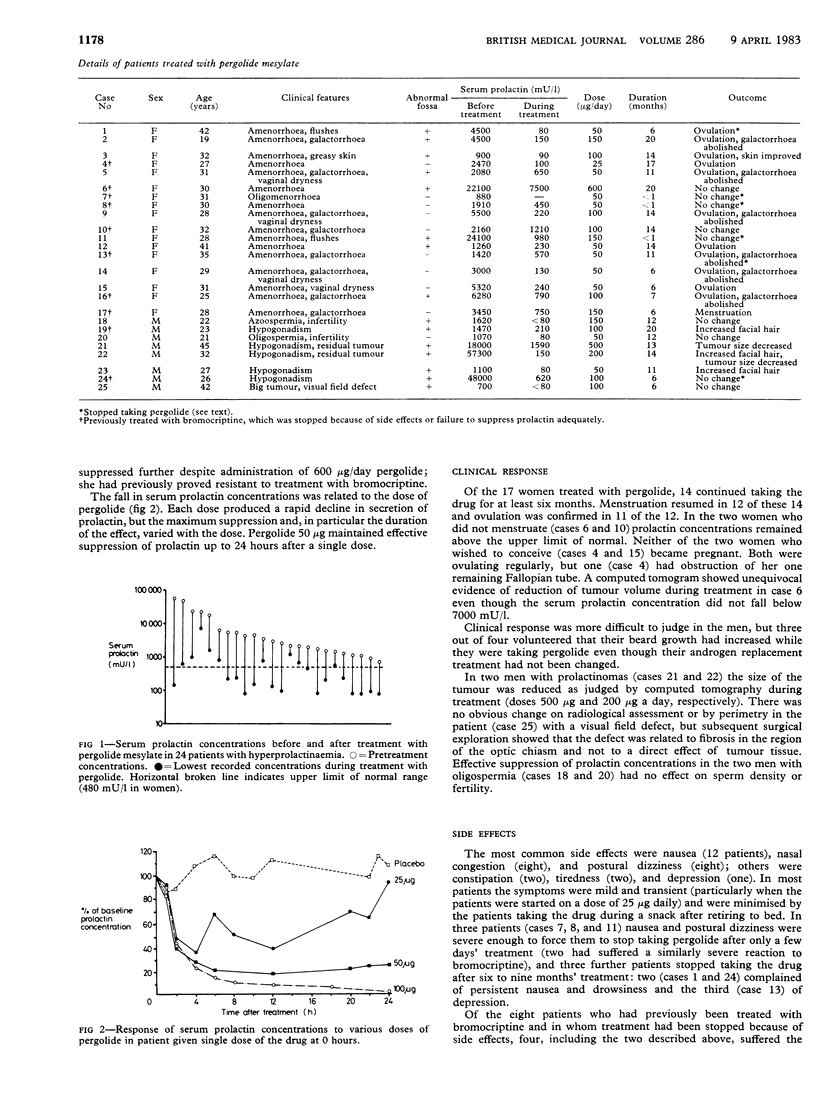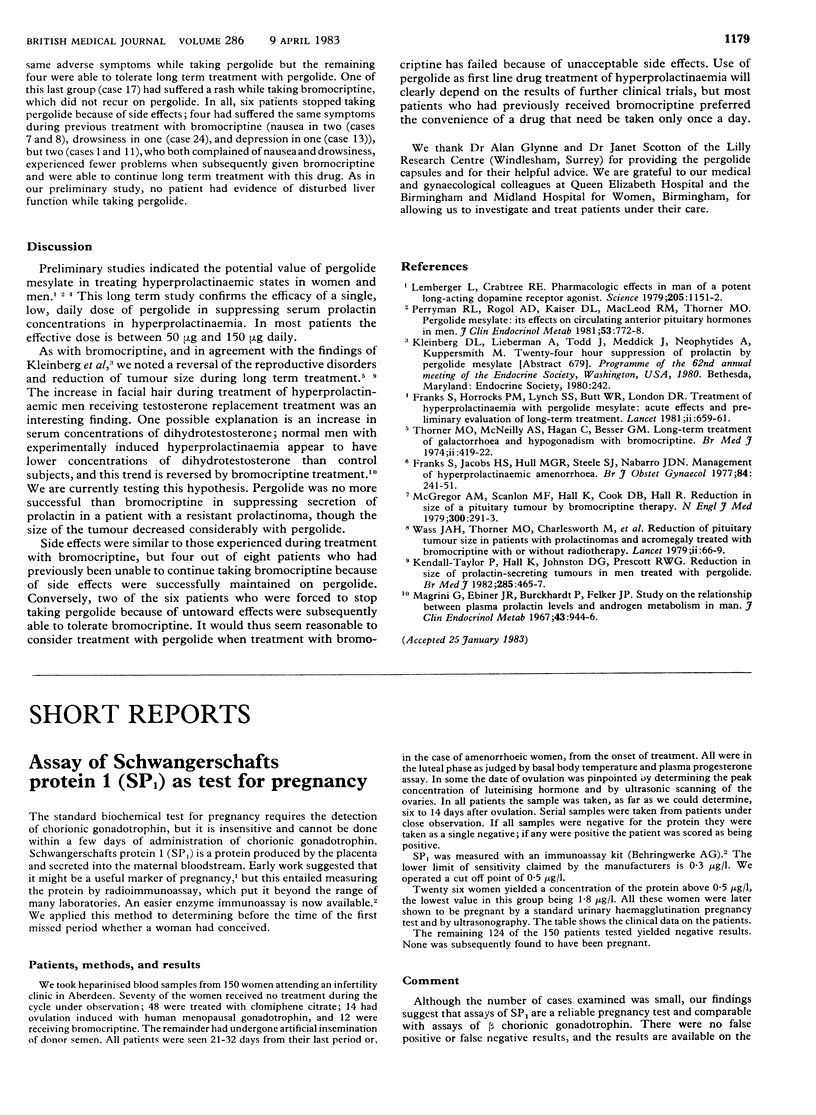Abstract
Twenty five patients with hyperprolactinaemia were treated with pergolide mesylate, a new dopamine receptor agonist. Twenty three received treatment for six to 20 months, and in all serum prolactin concentrations were considerably reduced. In most patients prolactin concentrations were maintained in the normal range by a low, once daily dose of pergolide and reversal of associated reproductive disorders was observed. Tumour volume as assessed by computed tomography decreased considerably during treatment in three out of four patients with a pituitary tumour. The drug was well tolerated. Side effects were similar to those of bromocriptine, but four out of eight patients who had been forced to stop taking bromocriptine because of untoward effects were subsequently able to tolerate treatment with pergolide. Pergolide mesylate promises to be a useful addition to the currently available long acting dopamine agonists in the management of hyperprolactinaemia.
Full text
PDF


Selected References
These references are in PubMed. This may not be the complete list of references from this article.
- Franks S., Horrocks P. M., Lynch S. S., Butt W. R., London D. R. Treatment of hyperprolactinaemia with pergolide mesylate: acute effects and preliminary evaluation of long-term treatment. Lancet. 1981 Sep 26;2(8248):659–661. doi: 10.1016/s0140-6736(81)90997-1. [DOI] [PubMed] [Google Scholar]
- Franks S., Jacobs H. S., Hull M. G., Steele S. J., Nabarro J. D. Management of hyperprolactinaemic amenorrhoea. Br J Obstet Gynaecol. 1977 Apr;84(4):241–253. doi: 10.1111/j.1471-0528.1977.tb12571.x. [DOI] [PubMed] [Google Scholar]
- Kendall-Taylor P., Hall K., Johnston D. G., Prescott R. W. Reduction in size of prolactin-secreting tumours in men treated with pergolide. Br Med J (Clin Res Ed) 1982 Aug 14;285(6340):465–467. doi: 10.1136/bmj.285.6340.465. [DOI] [PMC free article] [PubMed] [Google Scholar]
- Lemberger L., Crabtree R. E. Pharmacologic effects in man of a potent, long-acting dopamine receptor agonist. Science. 1979 Sep 14;205(4411):1151–1153. doi: 10.1126/science.382359. [DOI] [PubMed] [Google Scholar]
- Magrini B., Ebiner J. R., Burckhardt P., Felber J. P. Study on the relationship between plasma prolactin levels and androgen metabolism in man. J Clin Endocrinol Metab. 1976 Oct;43(4):944–947. doi: 10.1210/jcem-43-4-944. [DOI] [PubMed] [Google Scholar]
- McGregor A. M., Scanlon M. F., Hall K., Cook D. B., Hall R. Reduction in size of a pituitary tumor by bromocriptine therapy. N Engl J Med. 1979 Feb 8;300(6):291–293. doi: 10.1056/NEJM197902083000606. [DOI] [PubMed] [Google Scholar]
- Perryman R. L., Rogol A. D., Kaiser D. L., MacLeod R. M., Thorner M. O. Pergolide mesylate: its effects on circulating anterior pituitary hormones in man. J Clin Endocrinol Metab. 1981 Oct;53(4):772–778. doi: 10.1210/jcem-53-4-772. [DOI] [PubMed] [Google Scholar]
- Thorner M. O., McNeilly A. S., Hagan C., Besser G. M. Long-term treatment of galactorrhoea and hypogonadism with bromocriptine. Br Med J. 1974 May 25;2(5916):419–422. doi: 10.1136/bmj.2.5916.419. [DOI] [PMC free article] [PubMed] [Google Scholar]
- Wass J. A., Moult P. J., Thorner M. O., Dacie J. E., Charlesworth M., Jones A. E., Besser G. M. Reduction of pituitary-tumour size in patients with prolactinomas and acromegaly treated with bromocriptine with or without radiotherapy. Lancet. 1979 Jul 14;2(8133):66–69. doi: 10.1016/s0140-6736(79)90120-x. [DOI] [PubMed] [Google Scholar]


